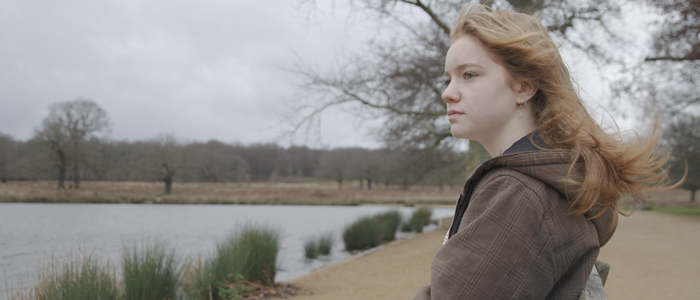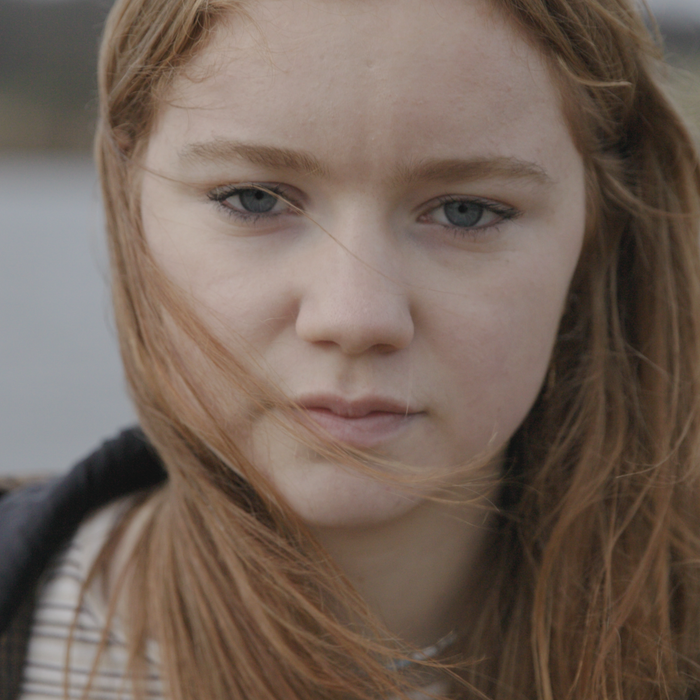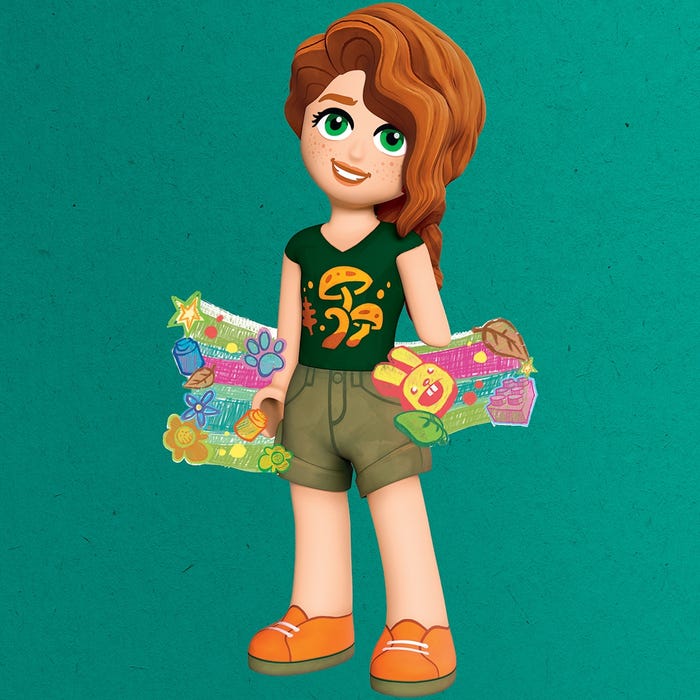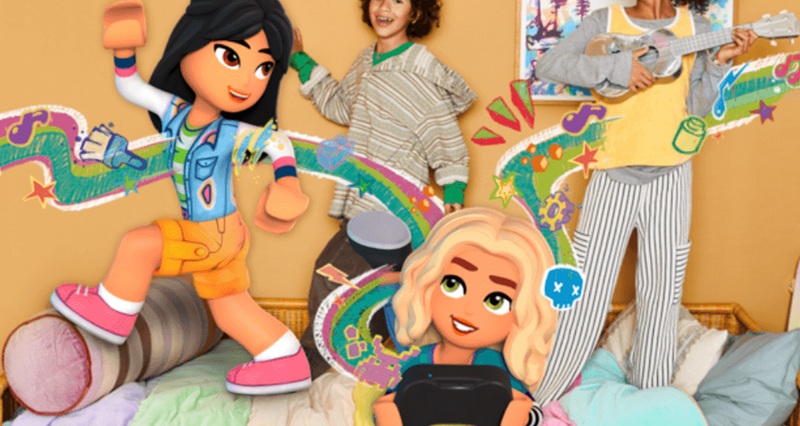Autumn grows pumpkins and apples on her new LEGO Friends house and you can try growing your own food too. Tomatoes and strawberries are great starter foods for any budding gardeners.
Starting simple can offer kids a faster result to keep them feeling inspired. Wildflower seeds are inexpensive and can be quick and easy to grow. Rewilding a pot or corner of your garden can be a basic and motivating way to get kids interested in gardening. These kinds of plants will attract bees and butterflies, and you can chat about how important these creatures are to our planet because of their role in pollination.
“What nature is there to love for the kids who live in cities? We should be talking about rewilding, about having biodiversity so that kids want to get outdoors.” – Bella Lack
Bella says: “People say, ‘Children are disconnected from nature, they’re on their devices too much.’ But what nature is there to love for the kids who live in cities? We should be talking about rewilding, about having biodiversity so that kids want to get outdoors.”
You can be birdwatchers too, just like Autumn. Put out a bird feeder in your garden or balcony and log the birds you spot.
Building a bug hotel is another fantastic way to help minibeasts thrive in your own microenvironment. If your child loves building LEGO sets, they can transfer those skills to making a place outdoors for insects to live. Collect things they find at the park or on walks such as twigs, fir cones, dried grass and bits of tree bark. Turn an old flowerpot on its side and encourage your kids to stack the things they have found inside, for a quick and easy minibeast motel.
While you are out and about on walks, picking up litter can be a really rewarding way to make your children feel like they are doing their bit to clean up the planet. It’s important to keep safe so come prepared with gloves and refuse sacks and, if you can, invest in a litter picker.
You can sort the trash for recycling and, if you are able to, take it directly to your local recycling center. Seeing the bag fill up and their environment become cleaner and greener gives your child tangible evidence that what they have done has really made a difference.



